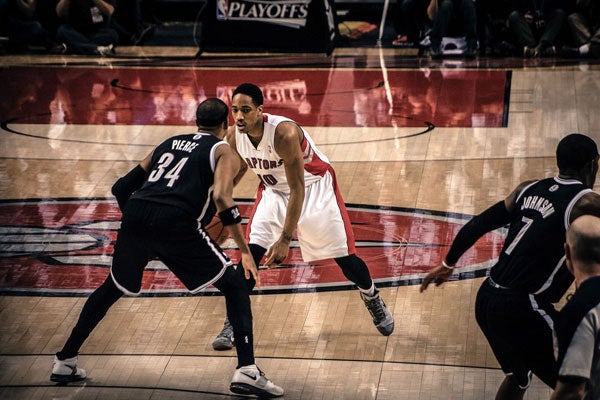
Raptor ball according to computer scientist Richard Zemel
Published: May 7, 2014
Most people wouldn’t associate the University of Toronto with an organization like the Toronto Raptors. But they’ve never met the University of Toronto's Professor Richard Zemel.
The Raptors recently consulted the computer scientist for help improving their game. Zemel is part of U of T’s Machine Learning Group, a team of researchers dedicated to understanding and enhancing the learning process in biological and artificial systems. The team develops methods for teaching computers to “learn” from data – not only to extract patterns but to also be able to infer how these patterns apply to unseen data.
The Raptors contacted Zemel and the Machine Learning Group to find researchers interested in sports analytics. Zemel was invited to the Air Canada Centre to watch the team play and discuss an existing monitoring system that tracks in-game player coordinates and delivers a breakdown of speed, distance, player separation and ball possession data.
How does the in-game monitoring work? Do players wear sensors?
There is a system in place that monitors player positions. The NBA has installed the SportVU Player Tracking technology in every arena, beginning with the 2013-2014 season. SportVU collects 25 frames of data per second, each frame containing the (x,y) coordinates of each of the 10 players and the (x,y,z) coordinates of the basketball.
What will your work help the team do more effectively?
Our aim is to build predictive models based on the tracking data. The goal is to go beyond simple player tendencies such as which positions on the court is he a good or bad shooter, to look at how that player reacts to particular situations, such as the other team's defensive setup.
Is this a common practice around the NBA? Do other teams get support from computer scientists?
Many teams have people doing analytics for them, and I think some of these groups include computer scientists. Also, since every team has access to the SportVU system, many of them are trying to make use of this data.For example, one group studied the effect of a team following a missed shot by pushing forward to get an offensive rebound versus falling back to play defense.
Other than basketball what other sports analyze and take advantage of analytics?
Besides baseball and basketball, it is popular in soccer, and is becoming increasingly popular in hockey. But there is no system like SportVU for hockey, so teams are working hard on tracking players and the puck.
For more on analytics and hockey, see the U of T News article on Professor Timothy Chan and David Novati.



